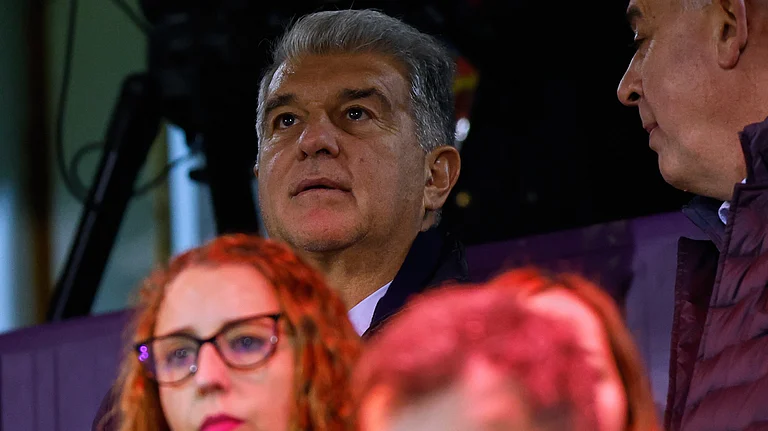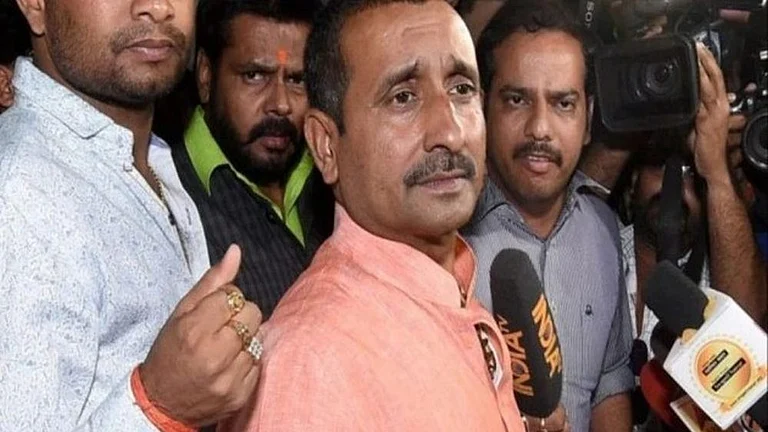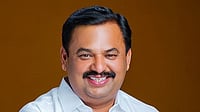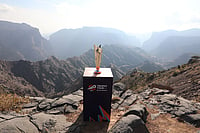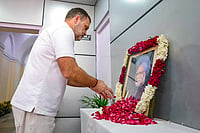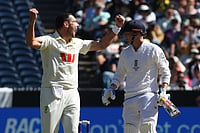IS Punjabi music only about bhangra and bhangra rap? About Daler Mehndi and Sukhbir? That's the overriding impression each time you switch on the TV or attend a cultural soiree. That tasteless joke about Punjab being 'a land of agriculture and no culture' has worn thin but continues to be bandied around.
"It's sad," says Chandigarh-based art historian Alka Pande, "that today's generation is almost totally unaware of the fact that Punjab was once the storehouse of a very rich tradition which, if not revived, will probably disappear in the next 20 years. We will only hear Bolo Tara Rara."
But thanks to committed people like Pande, a serious effort has finally been made to document the musical heritage of Punjab dating back to the Rig Vedic period and give it a fresh lease of life. Four years ago, the state government finally woke up to this cultural erosion and commissioned coordinator Paramjit Singh; historian Alka Pande, Reader at the University of Punjab and chairperson of the Chandigarh Lalit Kala Akademi; and photographer Diwan Manna to compile a comprehensive directory of the musical traditions of these robust people. To this end the culture department set up a fund of Rs 2 lakh, though the figure has gone up since then.
As the trio, accompanied by a researcher, traversed the state's four cultural zones, from the Puad region to the Doaba, from the Majha region to Malwa, the canvas came alive with classical, folk, bhakti, tribal and modern expositions. The classical tradition boasts the Sham Chourasi Gharana whose chief proponents shifted to Pakistan after the Partition and the Patiala gharana of which the best known is the unparalleled Ustad Bade Ghulam Ali Khan and, more recently, Parveen Sultana. The study also throws light on the pardtaal, an amalgamation of the Dhrupad and Khayal styles, typical of only Gurmatt Sangeet, unique to all music forms in the world.
The directory documents in detail the vast repertoire of Gurmatt Sangeet which started with Guru Nanak, sufiyana kalam, qawaali and kirtan styles. Among the instrumental repertoire alone, the team has documented more than 75 folk instruments typical to the region, ranging from the best-known dhol to the now dying been baja and the chimta, reflecting a cultural contiguity all the way from Central Asia to China.
The instrument-maker is as endangered a breed as the performer. The vast repository of folk songs, accompanied by rhythmic movements, springing from the Kissa Sahitya tradition—revolving around myths, legends and love poems, marriage songs, fertility songs, loris, martial music, those sung at funerals, festivals and mazhars, and Bujhartaan or puzzle songs—is being drowned out by the cacophony of the 'Ludhiana mandi' style of singing.
Says Morinda-based Garibu, belonging to the traditional Nath Jogi family of been saperas: "There's no respect left for us any more. My grandson has finally opted out and taken to rag-picking." Sufi Dhadi Sharief Idu who once mesmerised audiences with his powerful renditions is a depressed man today, barely able to keep body and soul together. His wife works as a midwife to support the family. Navratta Ram from Pabri does not even earn enough to keep his sarangi in working order. Pritam Singh from Boparai Kalan is the only folk sarangi-maker in the entire state and earns a living through carpentry.
"There are still some artistes left, but they are skating on thin ice. I have held lec-dems with some of the artistes at the India Habitat Centre and Punjab University and the response has been tremendous. What is required is a champion for this cause," says Pande. Unfortunately, the past decade has seen a massive shift in the representation of music rooted in folk traditions. A trend where the Punjabi rhythm is interspersed with rap, with a smattering of folk lyrics and energetic choreography. So strong and infectious are the rhythms of Punjabi drums that it has found a ready international audience. The lasting effect of algozas being played by soldiers atop a battle tank in the Hindi feature film Border is a telling statement of the power the ethnic music of Punjab still wields. But it has been at a steep price, the indigenous performer being sacrificed at the altar of pop culture.
Some Punjabi pop musicians, however, are trying to do their bit. Says Hansraj Hans: "Nowadays, each time I record a cassette, I do two-three traditional tracks so that people are at least forced to listen which might lead to renewed interest." Mapin has shown interest in publishing the directory. So has HMV and plans are afoot to try and find the funds to put the documentation on CD-ROM.
The study has gone beyond just music to incorporate profiles of different communities associated with the musical traditions of Punjab, collated melodies and drawn up a calendar of music festivals and fairs in the state. A monumental work no doubt, but as Pande says, let's hope there are still some takers left.







